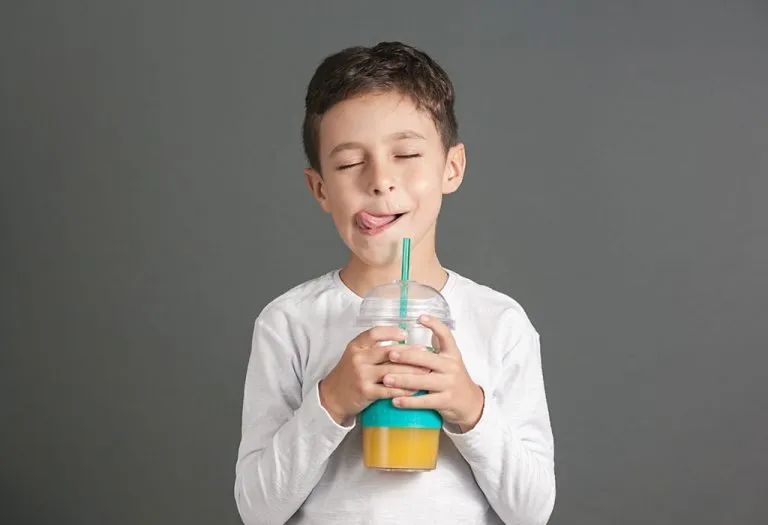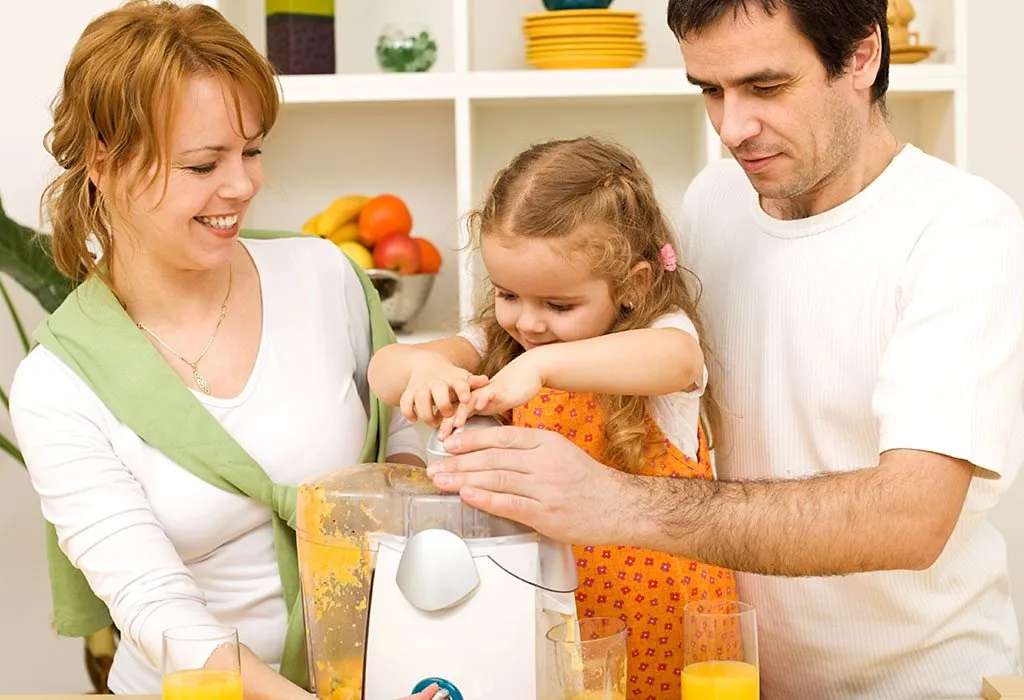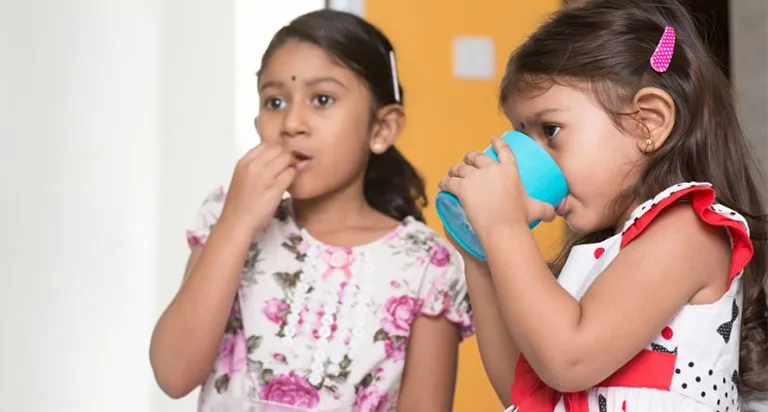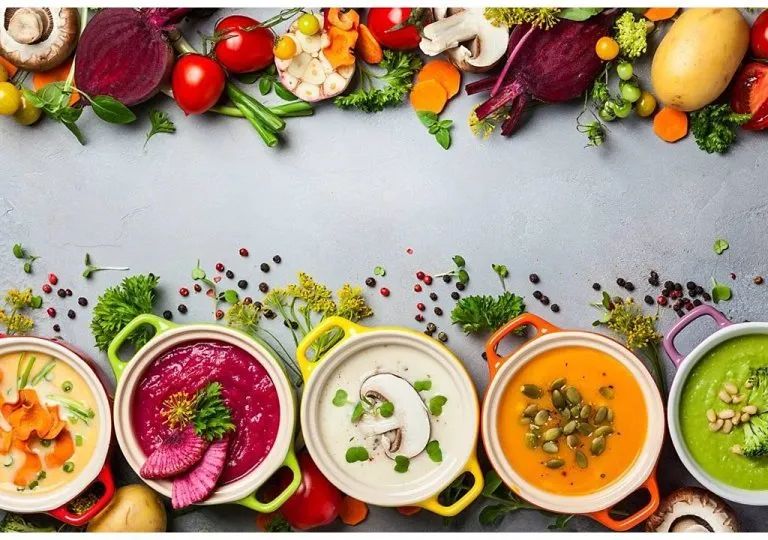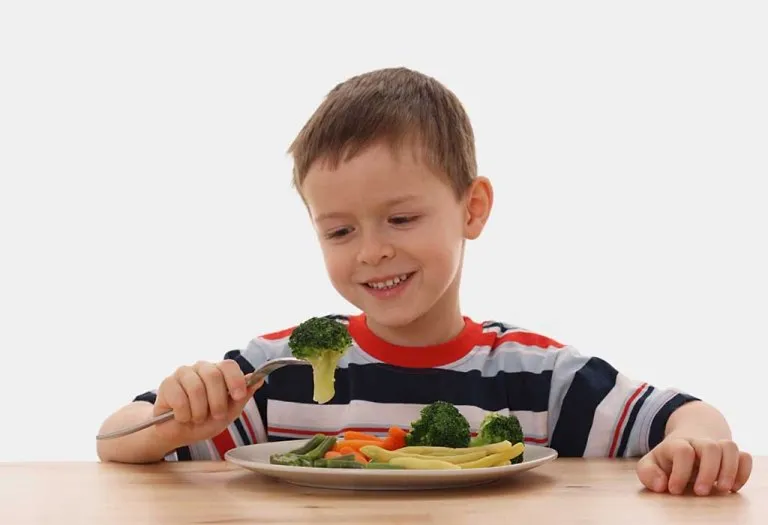10 Healthy Juices for Kids With Their Recipes

Kids can be fussy over food, which might be problematic at times since it may deprive them of essential nutrients needed for their body. So, as a parent, you have to ensure that they consume enough nutrients to stay healthy. They will detest anything green and leafy but will drool over anything red and orange, i.e., fruits. Now, the question is – how do you supply nutrients to their growing bodies? Well, one of the ways could be through vegetable and fruit juices. Read this post for some information about which nutrients babies need and how you can provide them with healthy juices for kids.
Are Juices Healthy for Kids?
Water is the ideal beverage for keeping kids hydrated. Juices can be a delightful treat, but it’s important not to give them regularly but in appropriate portions occasionally. It’s healthier for children to consume whole, fresh fruits and vegetables as a routine. 100% fruit juice can be a part of a healthy diet and provide essential nutrients without leading to weight gain. Many commercially available juices contain added sugars and other ingredients, so checking the labels is crucial.
Juices can be beneficial in several ways:
- They are great for encouraging children to eat more whole fruits and vegetables.
- Moderate consumption of fruit juices can provide flavonoids, which have antioxidant properties and offer long-term health benefits, such as improved cardiovascular health.
- Juices contain polyphenols, oligosaccharides, and nitrates that may act as prebiotics, supporting gut health.
- Homemade juices without added sugar and containing fiber can be a healthier snack option compared to soda and other sweetened drinks. However, whole fresh fruits and vegetables remain the best choice.
Nutrients Important for Kid’s Health
Your kid needs an ample amount of nutrition for her physical and mental growth. Here are some essential ones:
1. Calcium
Calcium is essential for the health of our teeth and bones. That’s why your kid needs a sufficient amount of calcium in her diet to promote her dental health and keep her bones strong.
2. Iron
Iron has an important role in our body as it transports blood and oxygen to the cells. It is essential for the proper functioning of our brain and muscles as well.
3. Fibre
Fibre is good for our digestive system. Proper bowel movements will ensure your little one’s immune system is functioning well.
4. Protein
An essential nutrient for our body, 16 per cent of our body weight is made up of protein. It aids the growth and maintenance of your child’s body.
5. Antioxidants
Antioxidants help in preventing certain diseases. They empower our immune system to fight against viral attacks and also keep us safe from other harmful substances.
Getting these nutrients into your child’s diet may seem easier in theory, but it is extremely difficult practically. So, how can you ensure your child drinks the juices you make for her? Read on for some ideas.
How Much Juice Can Kids Have?
Juice can be a part of a child’s diet, but it’s important to limit the amount they consume to avoid excessive sugar intake and to ensure they get enough fiber from whole fruits and vegetables. Below are the recommended daily limits for juice consumption based on age.
| Age | Daily Recommendation |
| Infants (under 1 year) | Avoid juice completely |
| 1-3 years | Up to 4 ounces (about 120 millilitres) per day |
| 4-6 years | 4-6 ounces (about 120-180 millilitres) per day |
| 7-18 years | Up to 8 ounces (about 240 millilitres) per day |
How to Make Your Child Drink Juices?
As kids are moody and fussy over what they eat and drink, introducing the habit of drinking juices might be a bit of a challenge. However, once they get the taste of all those yummy juices, it will be hard for them to resist it. Please remember that one should not consider juice as a substitute for fresh fruit and veggies for kids. Instead, you can include it in their diet to supply extra nutrients. Try these tips to introduce juice to your kids:
1. Involve Them
Kids are always curious, and they easily get excited by new things. Take advantage of this characteristic for good by involving them in the process. You may take them out with you to your local market to buy some fresh fruits and vegetables, and let them see how you make the juice. They will surely be excited to see how different fruits & vegetables come out of the juicer blending in each other. Be careful to keep the electronic, or sharp items out of their reach, though.
2. Start With Fruits
Go for fruits rather than with vegetable juices right off the bat. It takes some time for kids to get used to the taste of vegetable juice, but don’t worry they will, eventually.
3. Water Down
If the juice is too concentrated or sweet, then you may add water to it to adjust the taste to her taste buds.
4. Refrigerate It
Freshly pressed juices never fail to hit the spot when served chilled, especially during summer. So you may want to refrigerate it for a while before you serve it to your little ones.
5. Eye Drooling
Kids are always fascinated by colourful things. You may want to use appealing and colourful glassware and straws to make them drool.
6. Rhymes or Songs
You may take help of popular kids’ rhymes and songs while making juice with them, to keep them motivated to drink.
How to Select Healthy Juices for Your Children?
Choosing the right juice for your children can be challenging, with many options. It’s important to select nutritious juices free from added sugars and artificial ingredients. Here are some tips to help you make the best choice:
- Opt for 100% Fruit Juice: Ensure the label states “100% fruit juice” with no added sugars or sweeteners.
- Check the Ingredients List: Avoid juices with added sugars, high fructose corn syrup, or artificial ingredients.
- Look for Fortified Juices: Some juices are fortified with additional vitamins and minerals, such as vitamin D and calcium, which can be beneficial.
- Avoid Juice Drinks: Be cautious of products labeled as “juice drinks,” “juice cocktails,” or “juice blends,” as they often contain less fruit juice and more added sugars.
- Serve in Moderation: Follow the recommended daily limits for juice consumption based on your child’s age.
- Prefer Fresh or Homemade Juices: Opt for fresh or homemade juices without added sugars to control the quality and nutritional content.
10 Nutrient-Rich Juice Recipes That Promote Impeccable Health in Children
Now that we know how to stimulate the taste buds of your fussy eaters, let’s check out a few healthy juice drinks for kids which work absolute wonders for their health.
1. ABC Juice or Apple, Beetroot and Carrot juice
This is one of the best juices for kids. ABC juice is a rich source of antioxidants, dietary fibre, vitamin C, Iron, Magnesium and Vitamin A.
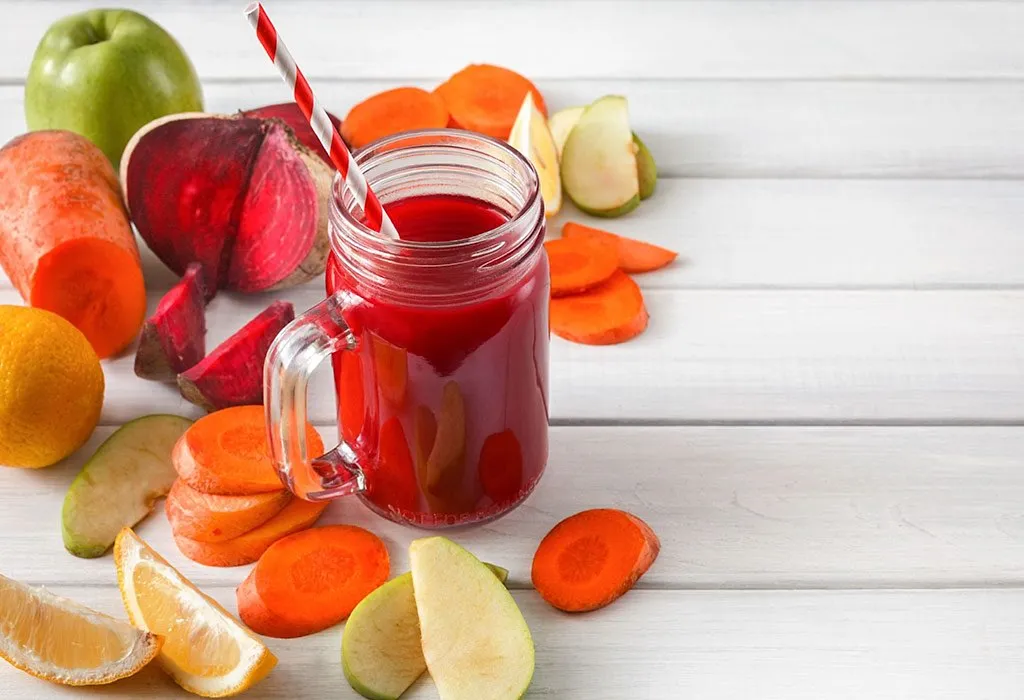
Ingredients
- 1 apple
- 2 carrots
- 1/2 beetroot
How to Make
- Wash the fruit and vegetables nicely with clean, drinkable water.
- Cut the fruits into small pieces or if your juicer allows you to put the whole piece.
- Fresh juices taste best when consumed on the same day.
2. Carrot and Orange juice
Carrot and orange juice are rich sources of dietary fibre, Vitamins A and C, and antioxidants. They help strengthen immunity and maintain a healthy digestive system.
Ingredients
- 1 whole orange
- 2 carrots
How to Make
- Wash the fruit and vegetable before cutting them into small pieces.
- Chop them and put them in the juicer.
- Serve the juice immediately.
3. Kale and Pineapple juice
This green juice for kids, made from kale and pineapple, is an excellent source of several Vitamins (A, B1, B2, B3, B6, K, C), fibre, calcium, iron, magnesium, protein, and much more. It’s one of the ideal juices for your kid’s development.
Ingredients
- 200-250g Kale
- 1-2 large slices of Pineapple
How to Make
- Rinse the fruit and vegetable through clean drinking water.
- Juice them either chopped or whole (if your juicer allows whole) in the juicer.
- You may store the juice in the refrigerator for a few minutes before serving it.
4. Apple Lemonade
Apple and lemon juice contains essential nutrients such as Vitamin C, fibre, calcium, potassium, and magnesium. It helps maintain a healthy digestive system, freshens breath, and improves skin quality.
Ingredients
- 2 whole apples
- ½ lemon
How to Make
- Rinse the fruits in clean drinking water.
- Cut apples into small pieces if your juicer doesn’t work for large slices.
- Serve it fresh.
5. Carrot, Orange, Pear Juice (COP Juice)
A juice is power-packed with the goodness of several essential vitamins and minerals, such as Vitamins A, C, and K, dietary fibre, iron, and calcium. This fruit juice for kids not only boasts essential nutrients, but it also tastes awesome.
Ingredients
- 2 carrots
- 1 pear
- 1 orange
How to Make
- Rinse the fruits and vegetables, cut them into small pieces, and put them in your juicer.
- It is best chilled, but you may serve it at room temperature if your child is susceptible to cold.
6. Green Legacy Juice
This green juice for kids contains essential nutrients such as Vitamins C and K, calcium, and fibre, which are required for children’s growth and development.
Ingredients
- A handful of Swiss chard
- Kale
- Spinach
- 1 pear
- 1 cup strawberries
- 1/2 lemon
- 1 apple
How To Make
- Rinse the veggies and fruits thoroughly with clean water.
- Juice the veggies first and then the fruits.
- Mix well and serve.
7. Carrot, Ginger, Tomato Juice
This vegetable juice for kids provides essential nutrients to the body and also helps strengthen the immune system.
Ingredients
- 2 carrots
- A small chunk of ginger
- 1 tomato
How to Make
- Rinse the vegetables with clean water before you juice them.
- You may add a slice of orange to enhance its taste.
- Serve fresh.
8. Strawberry and Apple Juice
This juice is a favourite among kids. Not only does it taste out of this world, but it is also full of vitamin C, dietary fibre, and antioxidants.
Ingredients
- 2 cups of strawberries
- 1 big apple
How to Make
- Start juicing the strawberries first, followed by the apple.
- Serve it immediately.
9. Mango and Spinach Juice
This juice combines the sweetness of mango with the nutrients of spinach, providing vitamins A, C, and K, as well as iron and fiber.
Ingredients
- 1 ripe mango
- A handful of spinach
How to Make
- Wash the mango and spinach thoroughly.
- Peel and cut the mango into chunks.
- Juice the spinach first, followed by the mango.
- Mix well and serve immediately.
10. Blueberry and Cucumber Juice
This refreshing juice is rich in antioxidants, vitamins C and K, and hydration, making it perfect for a hot day.
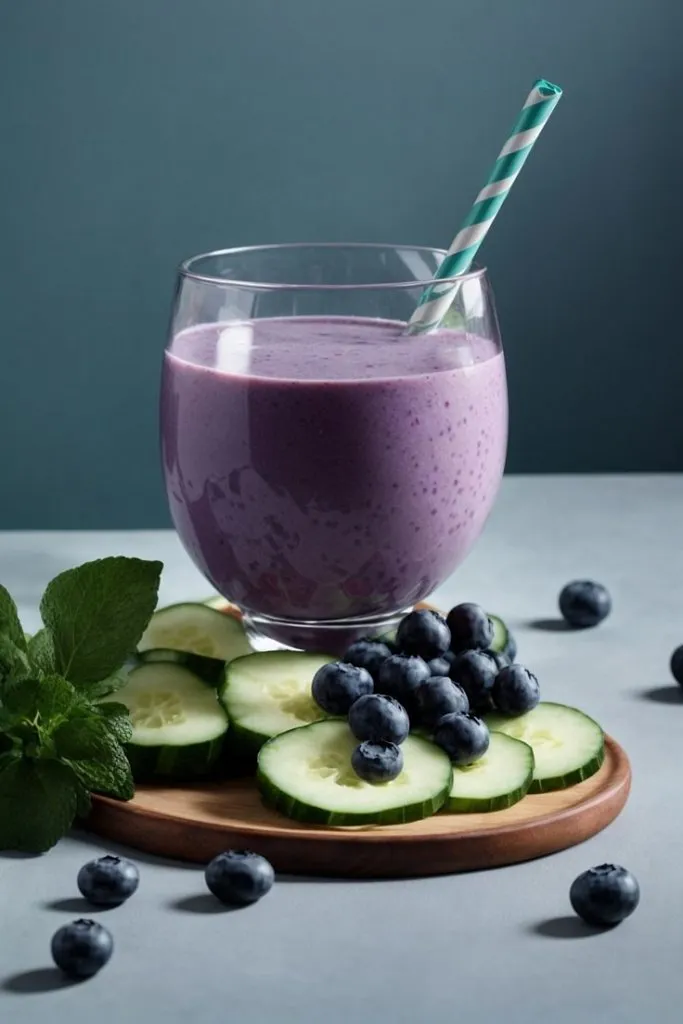
Source: Pinterest
Ingredients
- 1 cup blueberries
- 1 cucumber
How to Make
- Rinse the blueberries and cucumber thoroughly.
- Peel and chop the cucumber.
- Juice the cucumber first, followed by the blueberries.
- Serve chilled for a refreshing treat.
FAQs
1. Can I give my child juice if they are picky eaters?
Yes, juice can be useful for introducing fruits and vegetables to picky eaters. Mixing familiar fruits with less favored vegetables can help children get accustomed to new flavors. However, it’s important to do this in moderation and not rely solely on juice to meet their nutritional needs.
2. How can I ensure my homemade juice retains its nutrients?
To preserve the nutrients in homemade juice, it’s best to consume it immediately after juicing. If you need to store it, keep it in an airtight container in the refrigerator and consume it within 24 hours. This minimizes nutrient loss due to oxidation and exposure to light and air.
3. Are there any additives to avoid in store-bought juices?
When selecting store-bought juices, avoid products with added sugars, high fructose corn syrup, artificial colors, and preservatives. Check the label for 100% fruit juice with no additional ingredients. Organic options can also be a good choice to avoid pesticides and other chemicals.
4. Are there any specific juices that can help with hydration during illness?
Yes, certain juices can help with hydration when your child is ill. Coconut water and diluted apple juice can be effective in maintaining hydration. These juices provide electrolytes and some nutrients, but make sure they are given in moderation and alongside plenty of water to avoid excess sugar intake.
He hope you loved the delicious juice recipes for kids. Fruits and vegetables are an important part of your kid’s diet to provide her essential nutrients. Include fruit and vegetable juices in the right quantities for a balanced diet with the interesting juice recipes provided above to ensure nutrition is not compromised during your child’s growth years.
References/Resources:
1. Fruit Juice and Your Child’s Diet; American Academy of Pediatrics; https://www.healthychildren.org/English/healthy-living/nutrition/Pages/Fruit-Juice-and-Your-Childs-Diet.aspx
2. Where We Stand: Fruit Juice for Children; American Academy of Pediatrics; https://www.healthychildren.org/English/healthy-living/nutrition/Pages/Where-We-Stand-Fruit-Juice.aspx
3. Heyman. M, Abrams. S, Heitlinger. L, Cabana. M, et. al.; Fruit Juice in Infants, Children, and Adolescents: Current Recommendations; American Academy of Pediatrics Publications; https://publications.aap.org/pediatrics/article/139/6/e20170967/38754/Fruit-Juice-in-Infants-Children-and-Adolescents; June 2017
4. Soft drinks, juice and sweet drinks – children; Better Health Channel; Victoria State Government; https://www.betterhealth.vic.gov.au/health/healthyliving/soft-drinks-juice-and-sweet-drinks-children
5. Crowe-White. K, O’Neil. C, Parrott. J, et. al.; Impact of 100% Fruit Juice Consumption on Diet and Weight Status of Children: An Evidence-based Review (Critical Reviews in Food Science and Nutrition); National Library of Medicine; https://pubmed.ncbi.nlm.nih.gov/26091353/
6. Flavonoids; Oregon State University; https://lpi.oregonstate.edu/mic/dietary-factors/phytochemicals/flavonoids
7. Specific Food Labeling Requirements; U.S. Food & Drug Administration; https://www.accessdata.fda.gov/scripts/cdrh/cfdocs/cfcfr/CFRSearch.cfm?fr=101.30
Also Read:
Best Healthy Drinks for Kids
Delicious and Easy Mocktail for Kids
Easy Gluten-free Recipes for Children
Tasty Summer Drink Recipes for Kids
Was This Article Helpful?
Parenting is a huge responsibility, for you as a caregiver, but also for us as a parenting content platform. We understand that and take our responsibility of creating credible content seriously. FirstCry Parenting articles are written and published only after extensive research using factually sound references to deliver quality content that is accurate, validated by experts, and completely reliable. To understand how we go about creating content that is credible, read our editorial policy here.






